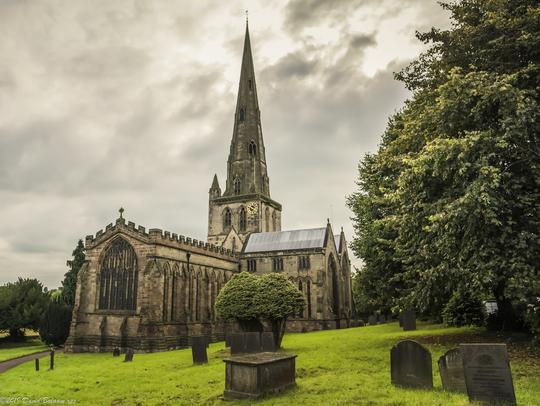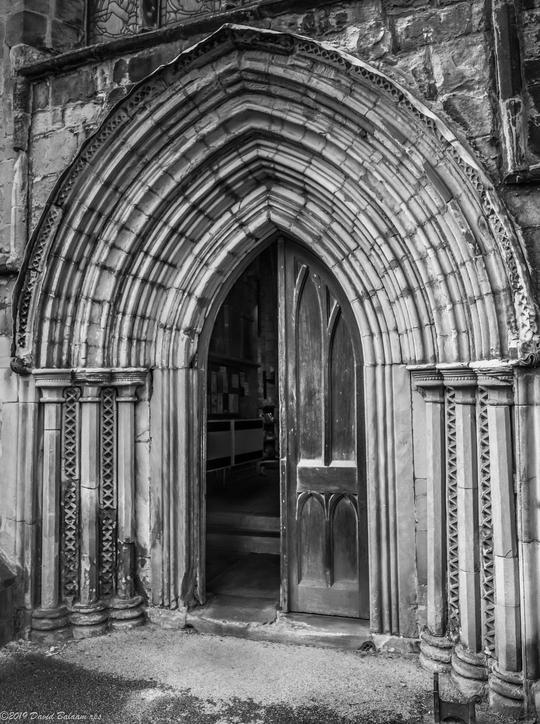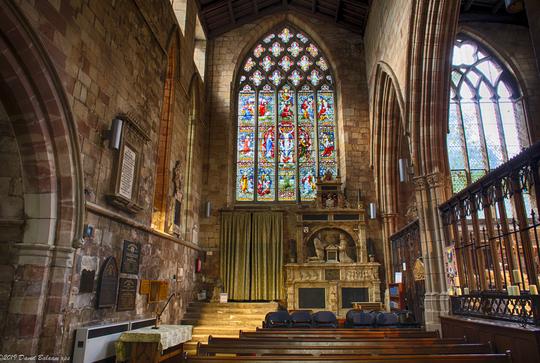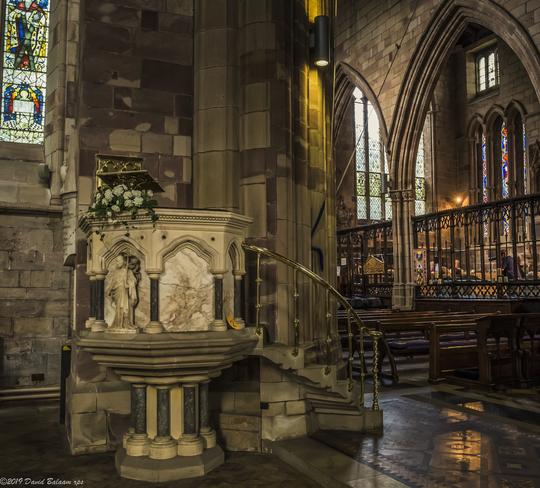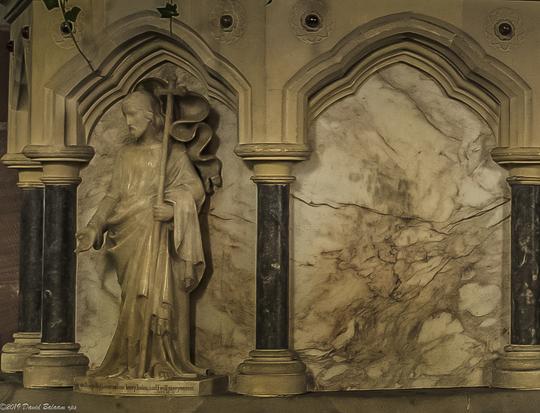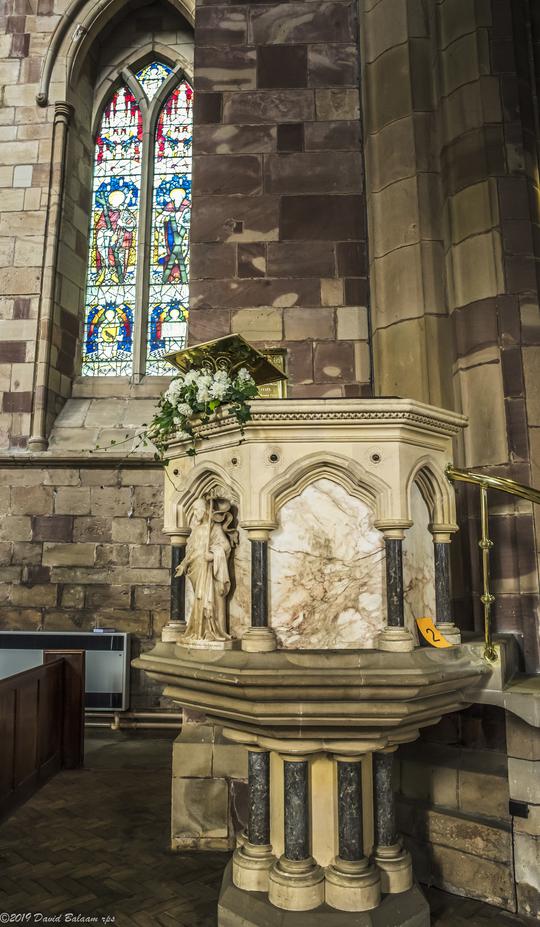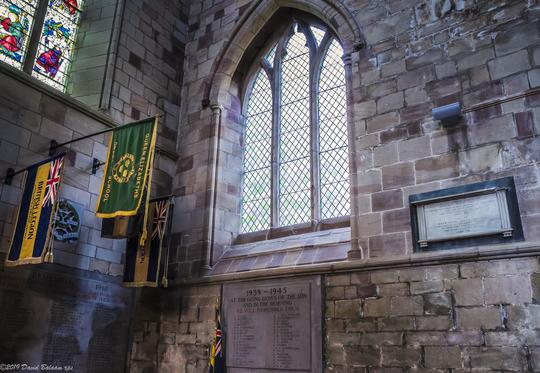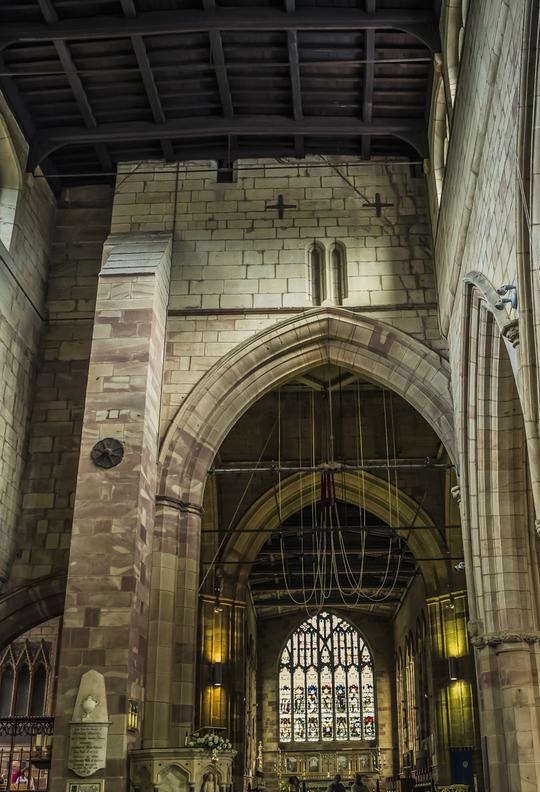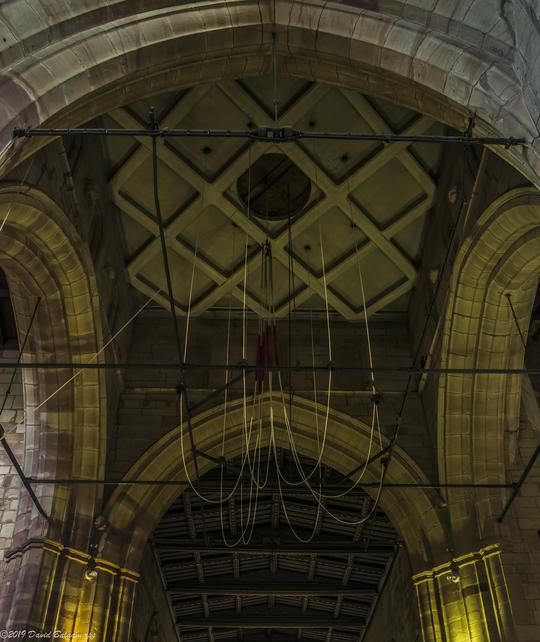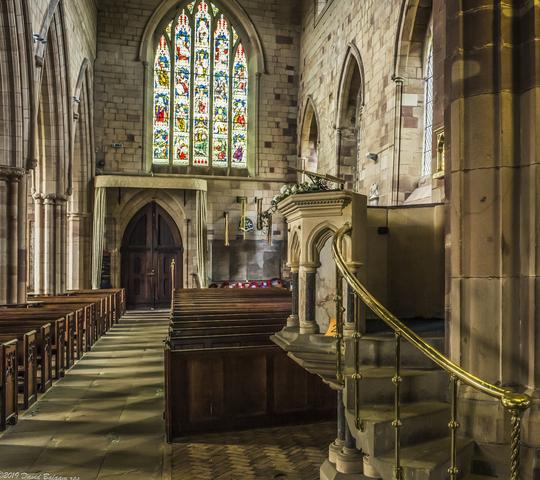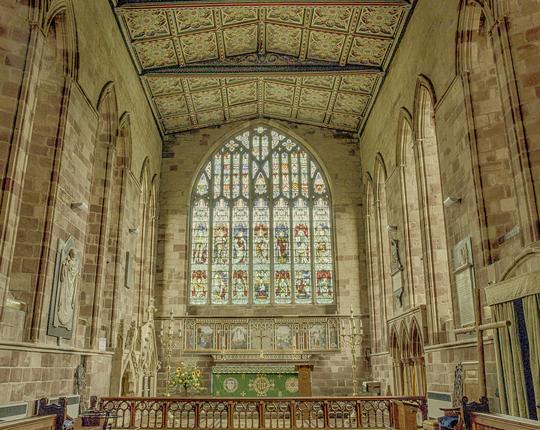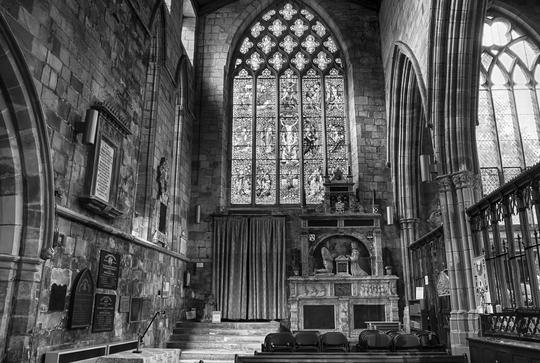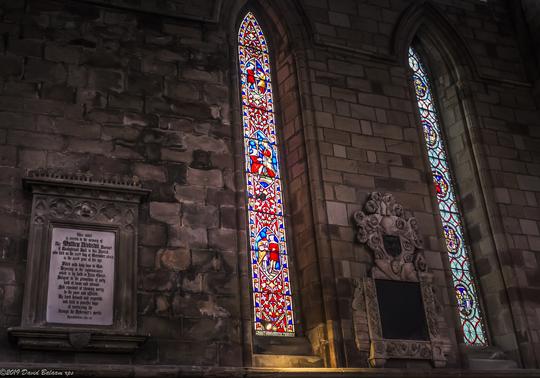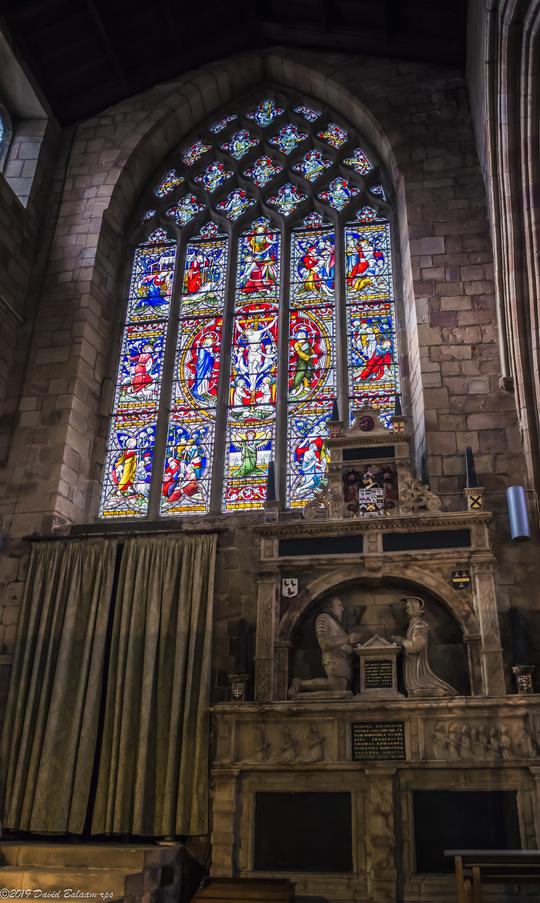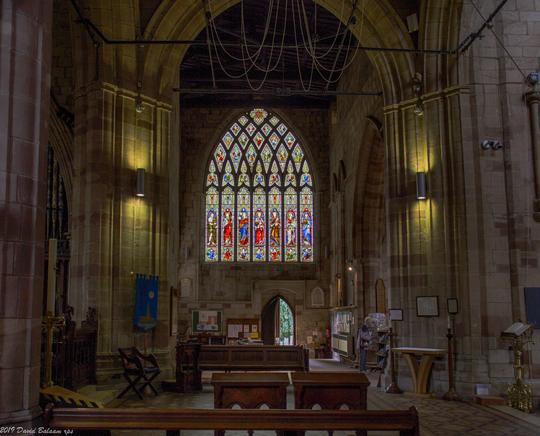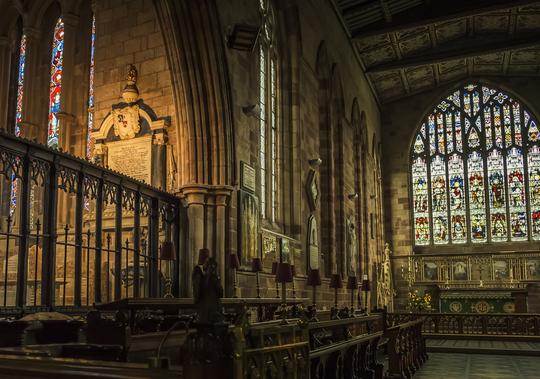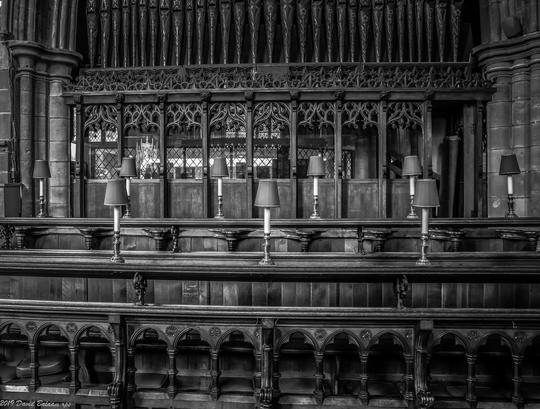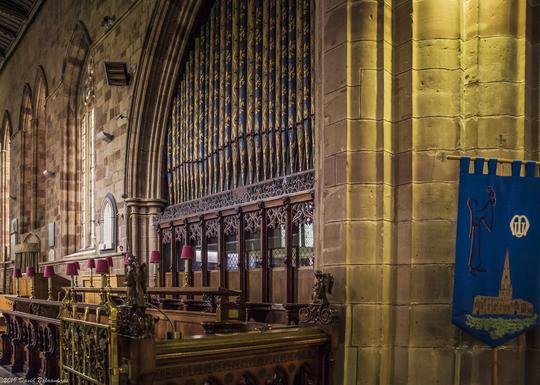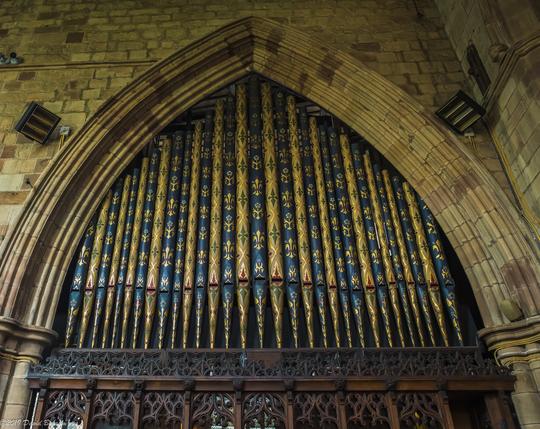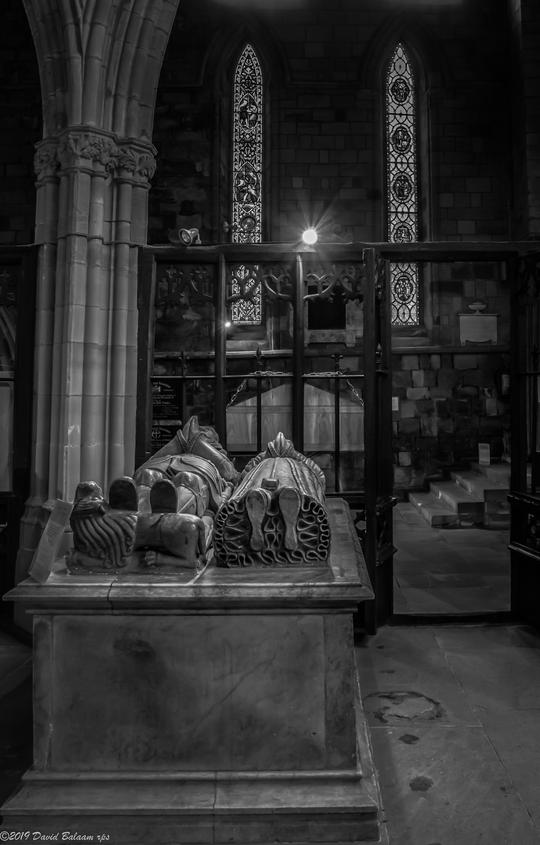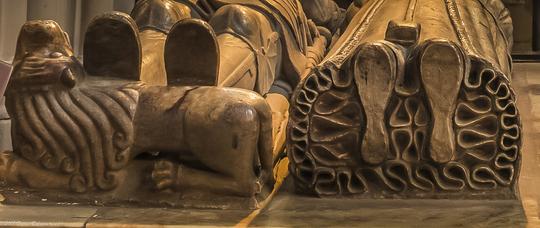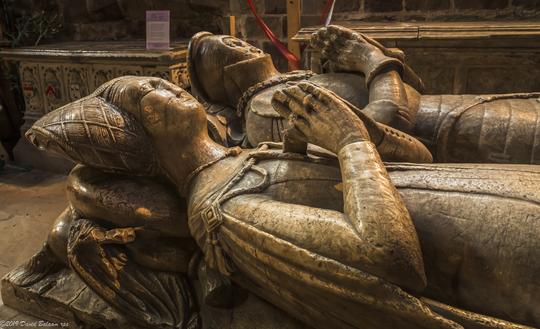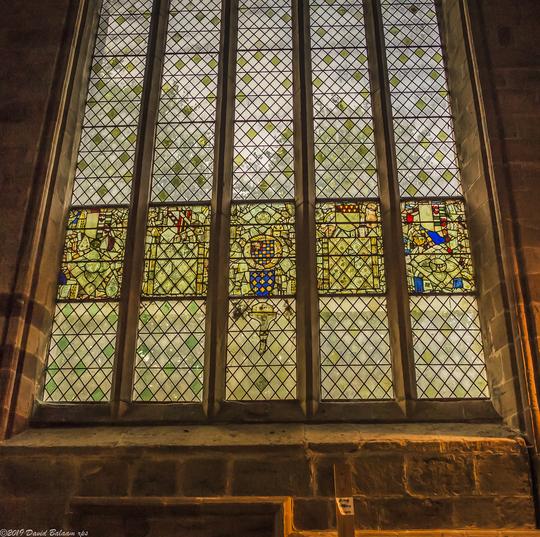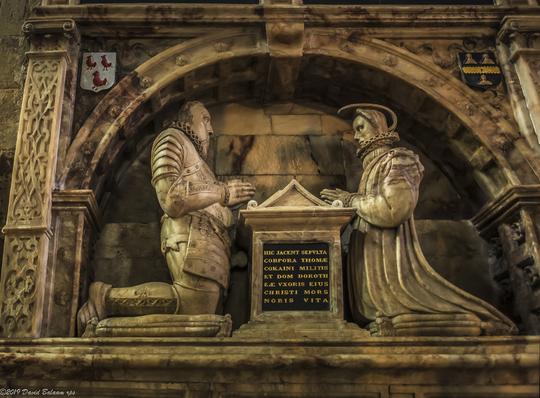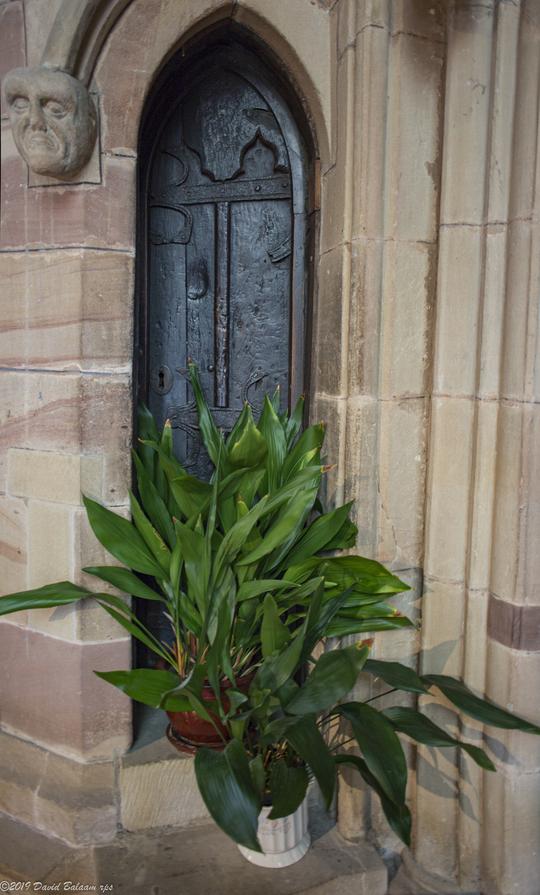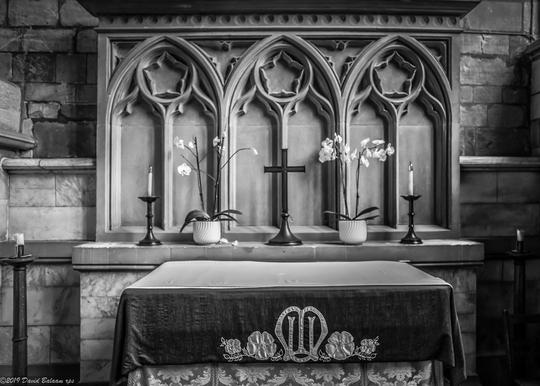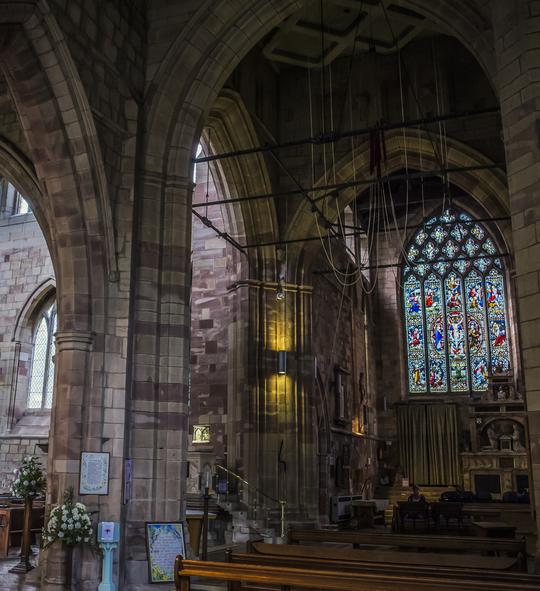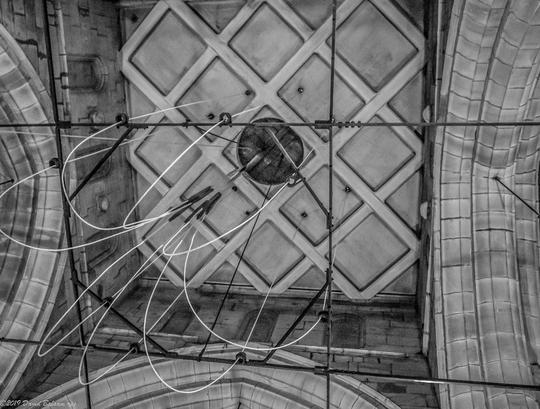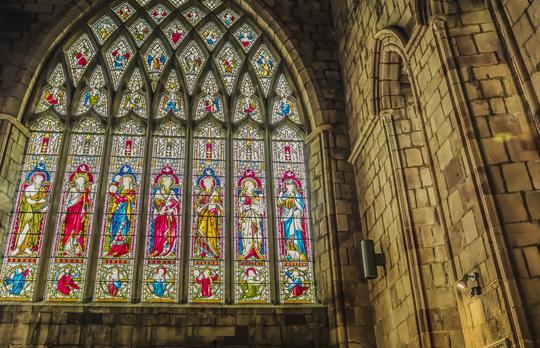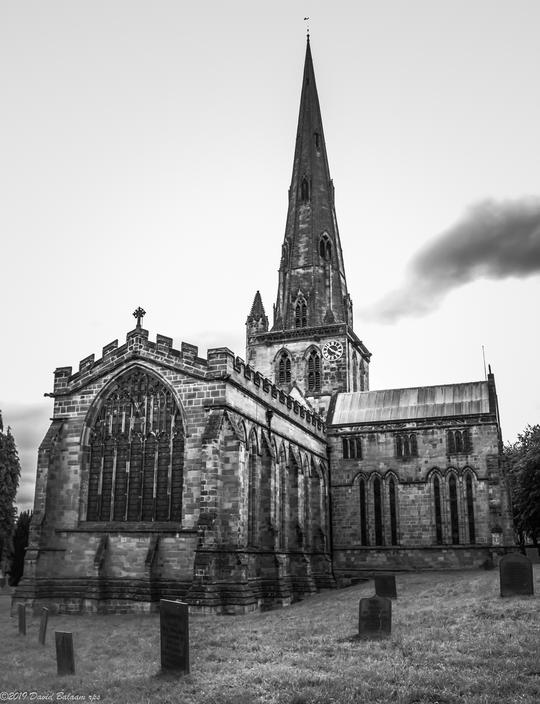St Oswald's, Ashbourne
The church is named after Oswald of Northumbria. A brass plaque in the chapel on the south side of the church commemorates its dedication on 24 April 1241 by Hugh de Pateshull, Bishop of Coventry and Lichfield. Architecturally, it dominates the small town with its 212-foot spire which was referred to by George Eliot as the "finest single spire in England". It is said to have been started in 1240 by Bishop Hugh de Pateshull. Construction probably lasted until the early 14th century. It replaced an earlier Saxon church, and possibly a second Norman one. (A Norman crypt was discovered during excavations in 1913.) From 1837 to 1840, it was restored by Lewis Nockalls Cottingham, and then in the 1870s by George Gilbert Scott, who added the battlements to the chancel. A new organ by Valentine of Leicester was installed in 1710. An organ was obtained in 1826 by the builder Parsons. It was enlarged in 1840. The current organ dates from 1858 and may contain pipework from an eighteenth-century instrument. It has had several restorations, including by Hill and Son in 1858, Hill again in 1876, Hill, Norman and Beard in 1950–51, 1982 and 2011 by Henry Groves & Son.
St Oswald's bells inspired lines in Lalla Rookh by Thomas Moore, who lived in the area for four years: Those evening bells! Those evening bells! How many a tale their music tells Of youth and home and that sweet time When last I heard their soothing chime. Those joyous hours are passed away: And many a heart that then was gay Within the tomb now darkly dwells And hears no more those evening bells. And so 'twill be when I am gone: That tuneful peal will still ring on While other bards shall walk these dells, And sing your praise, sweet evening bells.
Post Code: DE6 1AN
http://www.ashbourne-town.com/villages/ashbourne/st_oswalds/st_oswalds.html
